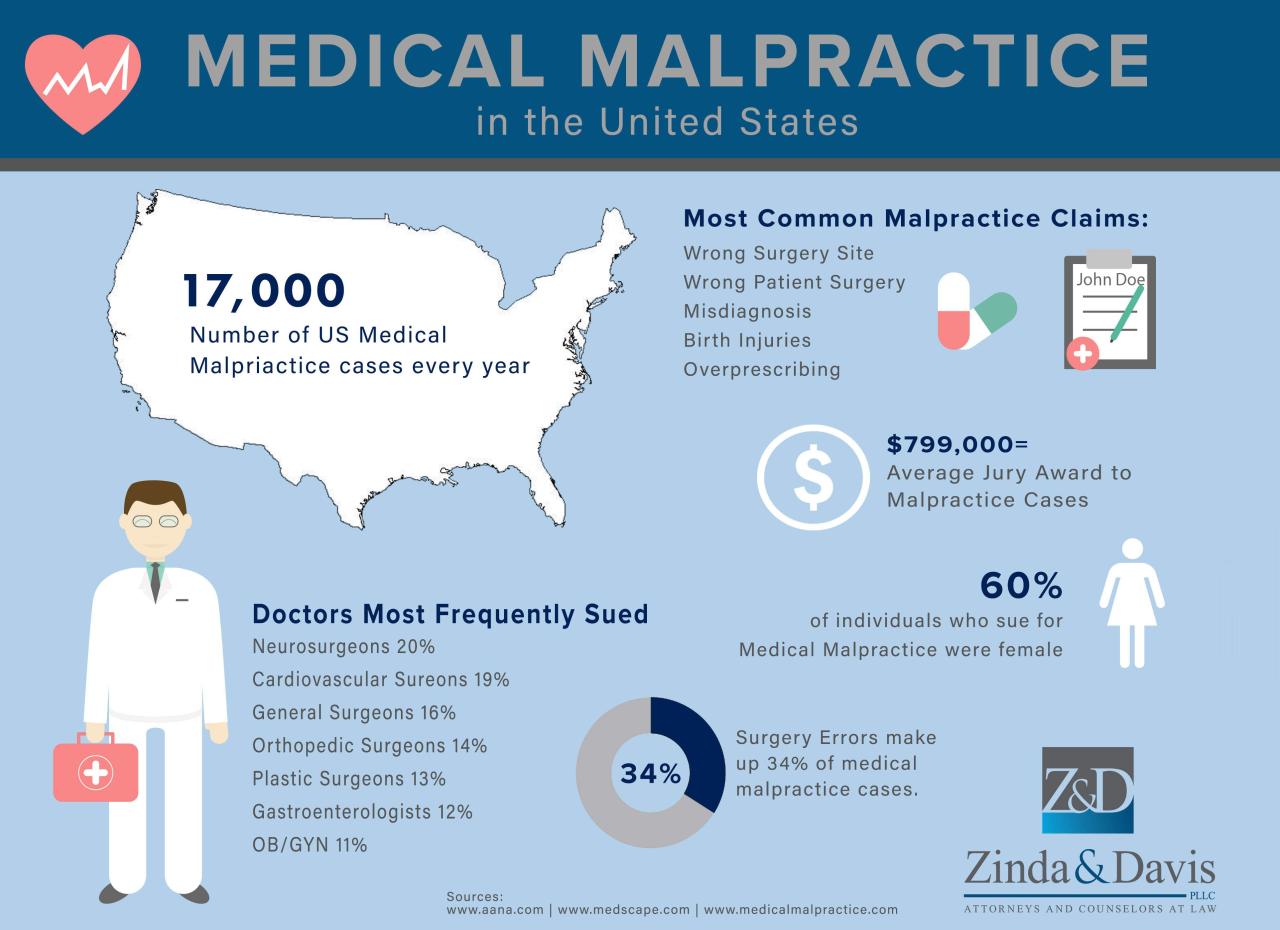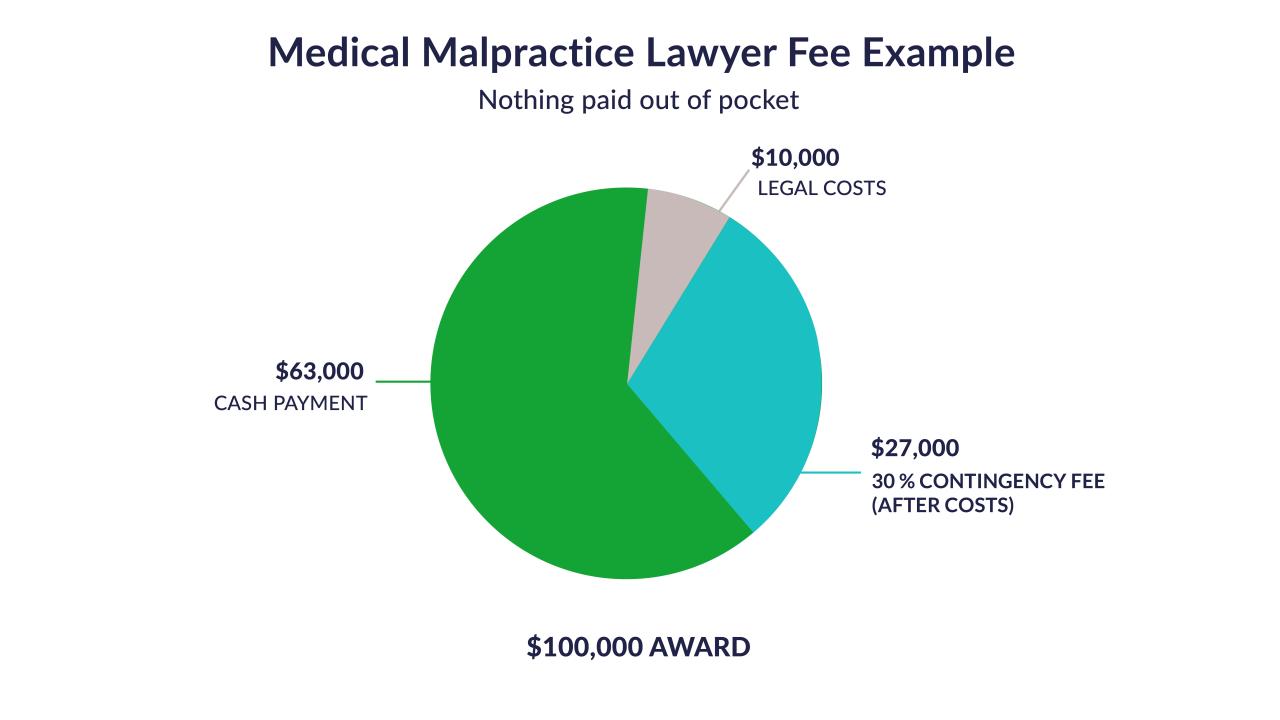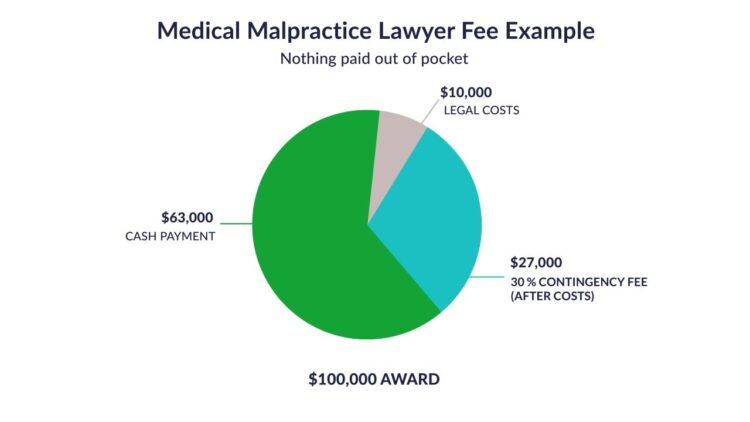
Compensation Structure

Medical malpractice lawyers are compensated in various ways, including hourly fees, contingency fees, and retainer fees. Each structure has its own advantages and disadvantages, and the choice of compensation structure often depends on the specific case and the lawyer’s experience.
Hourly Fees
Under an hourly fee arrangement, the lawyer charges a set amount for each hour worked on the case. This structure provides clients with predictability in terms of legal costs, as they know exactly how much they will be charged regardless of the outcome of the case. However, hourly fees can be expensive, especially for complex cases that require extensive investigation and litigation.
Contingency Fees
Contingency fees are a common form of compensation for medical malpractice lawyers. Under this structure, the lawyer receives a percentage of the settlement or verdict if the case is successful. This structure allows clients to pursue legal action without having to pay upfront costs, as the lawyer’s fees are contingent upon a favorable outcome.
The percentage of the contingency fee varies depending on the lawyer’s experience, the complexity of the case, and the likelihood of success. Typically, contingency fees range from 33% to 40% of the total settlement or verdict.
Advantages of Contingency Fees
- Clients do not have to pay upfront costs.
- Contingency fees align the lawyer’s interests with the client’s interests.
Disadvantages of Contingency Fees
- Clients may end up paying more in legal fees if the case is successful.
- Lawyers may be less likely to take on cases that are complex or have a low chance of success.
Retainer Fees
Retainer fees are another option for compensating medical malpractice lawyers. Under this structure, the client pays the lawyer a fixed amount upfront, which is then used to cover the lawyer’s fees as the case progresses. This structure provides clients with some certainty in terms of legal costs, while also allowing the lawyer to be compensated for their time and effort.
Industry Trends
The medical malpractice industry is undergoing significant transformations, driven by advancements in healthcare laws, medical technology, and evolving patient behaviors. These trends are shaping the demand for medical malpractice lawyers and influencing their salaries.
Changes in Healthcare Laws
Recent healthcare reforms have impacted the legal landscape for medical malpractice cases. Stricter regulations on healthcare providers, increased transparency in medical records, and expanded patient rights have led to an increase in medical malpractice claims. This has resulted in a higher demand for skilled lawyers who can navigate the complex legal framework and advocate for the rights of injured patients.
Advancements in Medical Technology
Technological advancements in medicine have both increased the potential for medical errors and improved the ability to diagnose and treat medical conditions. New medical devices, surgical techniques, and diagnostic tools have introduced new risks and complexities, requiring lawyers to stay abreast of the latest medical advancements to effectively represent their clients.
Changing Patient Behaviors
Patient expectations and behaviors have also evolved, contributing to the rise in medical malpractice claims. Patients are becoming more informed and assertive about their healthcare, and they are more likely to seek legal recourse when they believe they have been harmed by medical negligence. This has created a growing need for lawyers who can effectively communicate with patients, understand their concerns, and advocate for their best interests.
Career Advancement
Medical malpractice lawyers can advance their careers through promotions, specialization, and leadership roles. They may start as associates at law firms, where they gain experience handling medical malpractice cases. With experience, they may become partners or senior associates, taking on more responsibility and managing a team of junior lawyers.
Specialization
Some medical malpractice lawyers choose to specialize in a particular area of the law, such as birth injuries, surgical errors, or pharmaceutical liability. Specialization allows lawyers to develop expertise in a specific area, which can lead to higher salaries and career advancement opportunities.
Leadership Roles
Medical malpractice lawyers with strong leadership skills may be promoted to management positions within their firms or organizations. They may become managing partners, department heads, or even firm-wide leaders. Leadership roles offer opportunities for higher salaries, increased responsibility, and the chance to shape the direction of the firm or organization.
Career Path and Salary Potential
The career path and salary potential for medical malpractice lawyers can vary depending on their experience, skills, and location. According to the U.S. Bureau of Labor Statistics, the median annual salary for lawyers in 2021 was $126,930. However, medical malpractice lawyers can earn significantly more, with some top earners making over $200,000 per year.
Education and Training

To become a medical malpractice lawyer, a strong educational foundation is crucial. A Juris Doctor (J.D.) degree from an accredited law school is the minimum requirement. During law school, courses in torts, civil procedure, and evidence are particularly relevant. Additionally, coursework in healthcare law, medical terminology, and anatomy can provide a solid foundation.
Specialized Training and Certifications
Specialized training and certifications can enhance a medical malpractice lawyer’s credibility and expertise. The American Bar Association (ABA) offers a certification in medical malpractice law, which requires rigorous coursework and a comprehensive exam. Other organizations, such as the National Board of Trial Advocacy (NBTA), provide certifications in trial advocacy skills, which are essential for litigating medical malpractice cases.
Job Market

The job market for medical malpractice lawyers is highly competitive, with a limited number of positions available. However, there is a growing demand for experienced attorneys in this field due to the increasing number of medical malpractice lawsuits being filed.
Availability of Jobs
Jobs for medical malpractice lawyers are available in various regions across the country, with major metropolitan areas offering the most opportunities. The availability of jobs also varies depending on the practice area, with some specialties, such as birth injury cases, having a higher demand than others.
Hiring Process
The hiring process for medical malpractice lawyers typically involves submitting a resume and cover letter, followed by an interview. During the interview, candidates are evaluated based on their experience, skills, and knowledge of medical malpractice law.
Job Search Strategies
To increase their chances of finding a job, medical malpractice lawyers can use various job search strategies, including networking with other attorneys, attending industry events, and using online job boards. Additionally, they can consider specializing in a particular area of medical malpractice law to enhance their marketability.





